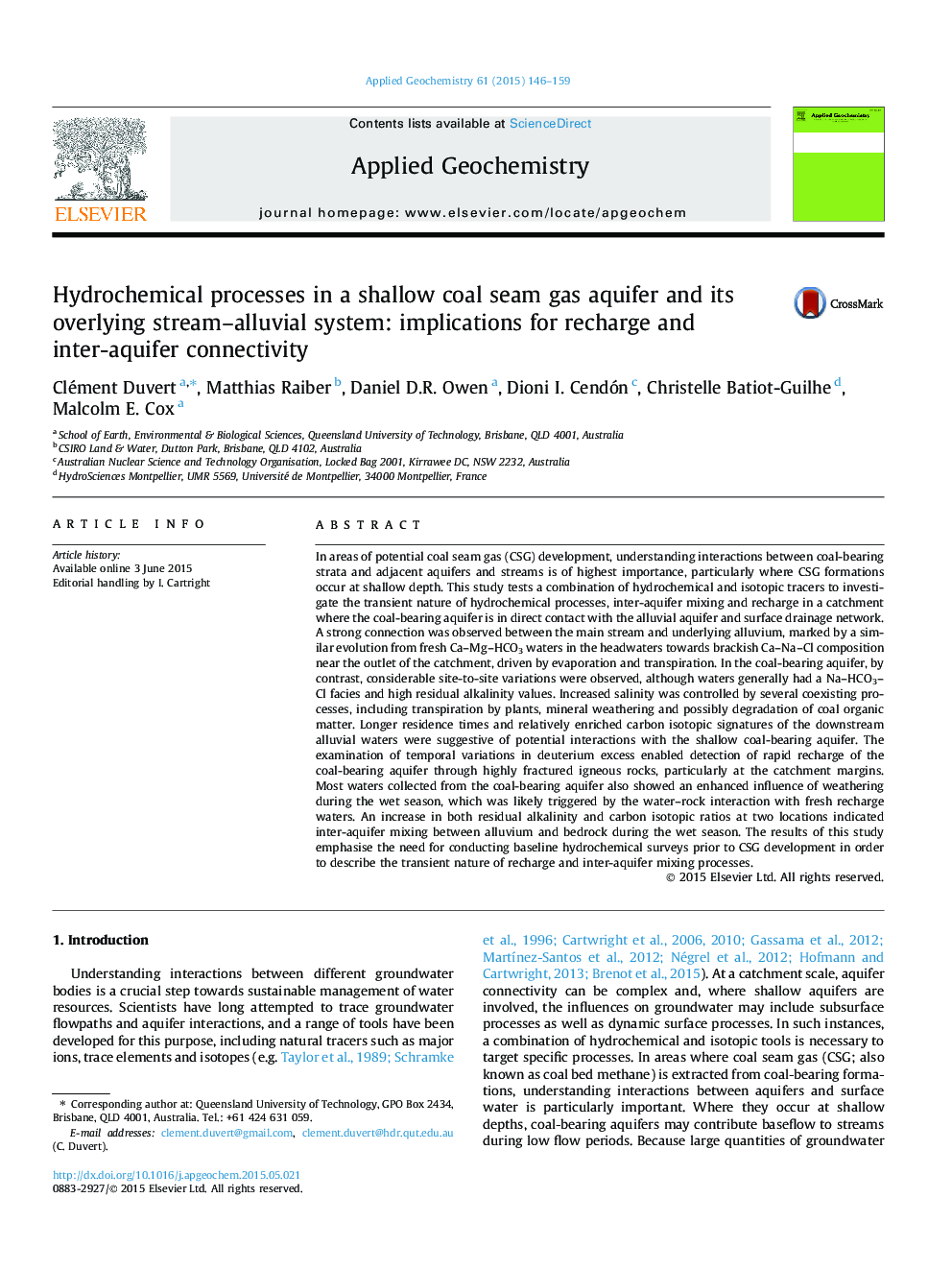| Article ID | Journal | Published Year | Pages | File Type |
|---|---|---|---|---|
| 6335016 | Applied Geochemistry | 2015 | 14 Pages |
â¢Major ions and isotopes used to study inter-aquifer mixing in a shallow CSG setting.â¢Considerable heterogeneity in the water composition of the coal-bearing aquifer.â¢Rapid recharge of the coal-bearing aquifer through highly fractured igneous rocks.â¢Potential mixing between the coal-bearing aquifer and downstream alluvial aquifer.â¢Need to consider the seasonal influences on inter-aquifer mixing in CSG settings.
In areas of potential coal seam gas (CSG) development, understanding interactions between coal-bearing strata and adjacent aquifers and streams is of highest importance, particularly where CSG formations occur at shallow depth. This study tests a combination of hydrochemical and isotopic tracers to investigate the transient nature of hydrochemical processes, inter-aquifer mixing and recharge in a catchment where the coal-bearing aquifer is in direct contact with the alluvial aquifer and surface drainage network. A strong connection was observed between the main stream and underlying alluvium, marked by a similar evolution from fresh Ca-Mg-HCO3 waters in the headwaters towards brackish Ca-Na-Cl composition near the outlet of the catchment, driven by evaporation and transpiration. In the coal-bearing aquifer, by contrast, considerable site-to-site variations were observed, although waters generally had a Na-HCO3-Cl facies and high residual alkalinity values. Increased salinity was controlled by several coexisting processes, including transpiration by plants, mineral weathering and possibly degradation of coal organic matter. Longer residence times and relatively enriched carbon isotopic signatures of the downstream alluvial waters were suggestive of potential interactions with the shallow coal-bearing aquifer. The examination of temporal variations in deuterium excess enabled detection of rapid recharge of the coal-bearing aquifer through highly fractured igneous rocks, particularly at the catchment margins. Most waters collected from the coal-bearing aquifer also showed an enhanced influence of weathering during the wet season, which was likely triggered by the water-rock interaction with fresh recharge waters. An increase in both residual alkalinity and carbon isotopic ratios at two locations indicated inter-aquifer mixing between alluvium and bedrock during the wet season. The results of this study emphasise the need for conducting baseline hydrochemical surveys prior to CSG development in order to describe the transient nature of recharge and inter-aquifer mixing processes.
